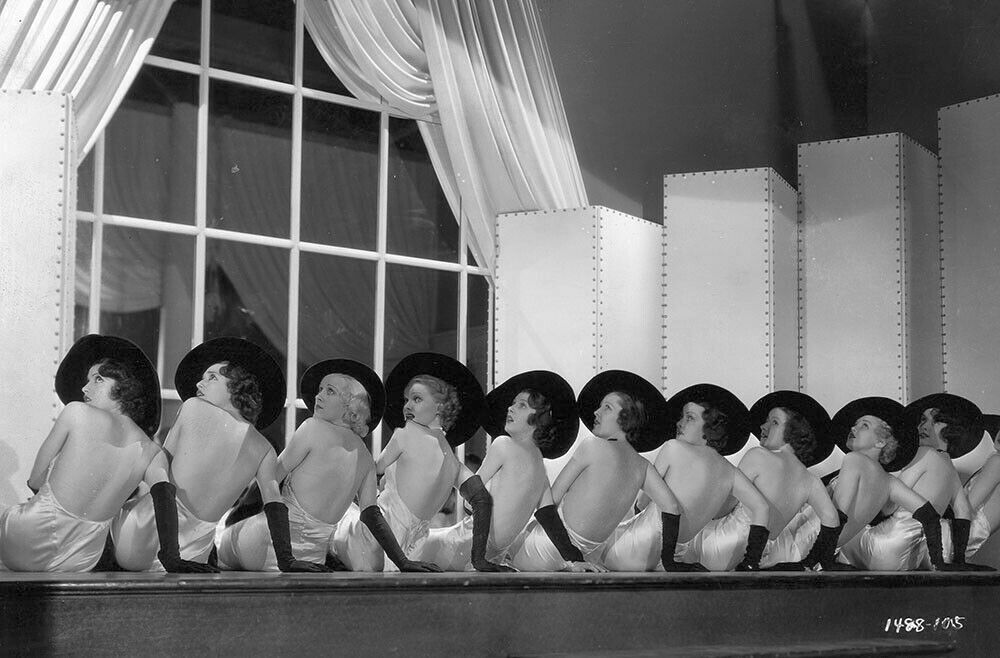
Murder At The Vanities (1934) is one of the best known pre-code Hollywood films today, having been featured in the Universal Backlot Series DVD boxed set Pre-Code Hollywood Collection from 2009. Produced by Paramount Pictures, Murder At The Vanities brings Earl Carroll’s musical revue The Earl Carroll Vanities to the big screen, adding plenty of backstage intrigue in the form of a rather boilerplate whodunnit. The film balances extravagant musical numbers full of scantily clad chorus girls with scenes of wisecracking, hard boiled detectives getting the runaround from the cast and crew as they investigate a murder.
Filmmaker Mitchell Leisen’s light touch makes Murder At The Vanities a true cinematic confection. The pacing of the film is tight, rocketing along at a steady clip from gumshoe antics to show stopping musical spectacle. While Leisen gets generally good performances from his ensemble, the real highlight of the film are the tantalizing and provocative theatrical set pieces. Leisen emulates Busby Berkeley as he takes the camera onto the stage and into spaces that could only exist on film. A number will start with the camera positioned where a live audience would be only to gradually move in closer until Leisen cuts to a close-up of an almost nude dancer on the stage.
The Earl Carroll Vanities that inspired Murder At The Vanities follows in the tradition of Florenz Ziegfeld Jr. These theatre revues showcased musical numbers, comedians, and even vaudeville acts on gigantic sets. The thematic glue of such revues were the chorines in their titillating costumes who would take to the stage, as either a chorus or a transitional act, and dance about provocatively. Murder At The Vanities delivers this but has to hang the plotless revue on a murder mystery to give the film dramatic stakes and urgency.
Films like Murder At The Vanities weren’t uncommon in the thirties by any means. The reason that Murder At The Vanities remains marketable and of interest to the public has to do with one particularly infamous song as well as the participation of Duke Ellington and His Orchestra. The epic “Ebony Rhapsody” is performed by Duke Ellington and His Orchestra and serves as an early record of one of the most important of the big bands. Ellington’s name remains better known today than that of any of the film’s stars. As for that infamous song, “Sweet Marijuana”, its enduring renown is rather self-explanatory.
The sex, the jazz, and the drug references in Murder At The Vanities coupled with Leisen’s light, playful direction have made Universal Pictures’ job of selling the film as one of the great exemplars of pre-code Hollywood entertainment relatively easy. Obviously Murder At The Vanities is a terrifically fun and enjoyable picture even though it never truly exploits the freedoms of the pre-code era for anything more than cheap thrills. It just goes to show how far snappy patter, innuendo, partial nudity and excellent direction can take a movie.
